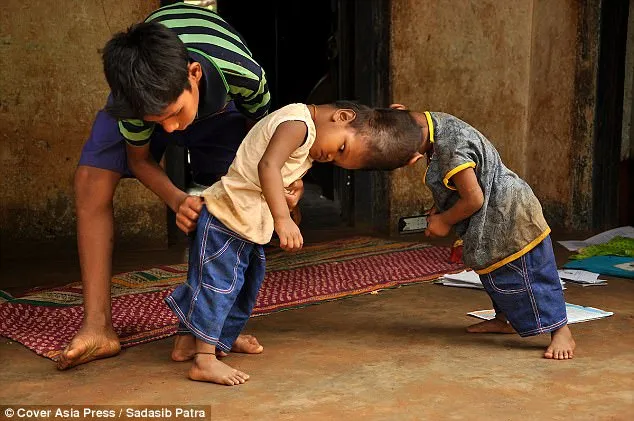“To bring back some normalcy to the lives of conjoined twins who are joined at the top of the head, a group of 30 doctors from India and other countries around the world have started the separation process, even though they expect to have to wait a long time.” The next day, they should get confirmation of their progress.
One of the babies after being torn apart from its mother. Honey and Singh, two-year-old boys, have been joined at the head since birth and have an 80% chance of dying if they are not separated.

In March 2015, PŠshpanjali Kanhar, a 25-year-old mother of two from India’s Orissa state, was shocked when she saw her two new babies together for the first time. This was something she hadn’t expected while she was pregnant. For this reason, the family had to take the two kids home, even though the government of Orissa said they would do everything they could to help them.There are two babies in the hallways before the room.
The first step of the surgery was done on August 28 of this year. Bridging blood vessels were made from the common blood vessels that carry blood from the heart to the arteries for both kids. “These twins are called craniopagus’ twins because they have two separate brains that are joined at the head,” said Dr. Swapneshwar Gadnayak, who was involved in the study. A lot of sketch cases have been carefully cut up, but it’s hard to tell them apart if they share the same artery. Their father, Mr. Bhʉan Kanhar, is a farmer who makes only 1,600 rʼnpees (about 700,000 VND) a month. He tried everything to help his child, but he couldn’t because he was poor. “The family was so poor that I had no hope and had to see them suffer like that for two years,” he said.

The family of the two kids tried hard for two years to adopt them, but they were turned away because they were too poor.
Mr. Kanhar and his wife have two healthy other sons, ages 9 and 6. They want the other kids to live and play with them.
And on October 26, this dream came true when 30 doctors worked for 16 hours to separate the heads of Jaga and Kalia at a temple in Delhi. It was the first surgery of its kind in India.

During surgery, it was found that the two babies had the same cranial vault and blood vessels. This is a very uncommon situation that happens in about 1 out of every 3 million births.

The things the two kids did were really cool. The head of the Indian Institutes of Health Sciences, Dr. Randeep Gheeleria, told the president, “The next 18 days will show how the procedure goes.” A K Mahapatra, a doctor who helped with the surgery, said, “Both babies had other health problems.” Kalia has kidney disease, while Jaga has heart disease. Jaga used to be stronger, but Kalia is getting stronger and Jaga is getting weaker. Doctors said the hardest part after separating the babies’ heads was “giving both heads enough skin to cover them because the separation left big gaps on their heads.” An expert in plastic surgery said, “If they can do it themselves, the next step is to reconstrct their skills.”
